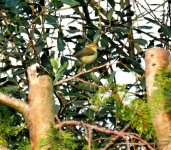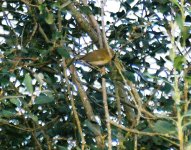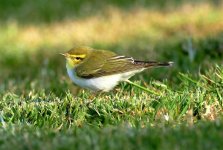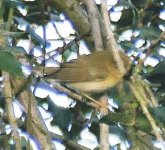KenM
Well-known member
Looking back through last weekend's ''digital shooting spree'' I came across a single image that I'd seen before, plus one that I hadn't! The shots were taken two minutes apart at the same location, but in different trees perhaps 2-3m apart. FWIW I'm seasoned regarding Wood Warbler and have imaged the species numerous times here and abroad, however I'm finding this situation a tad sticky! First image taken looked not unlike the former, however with the pp being seemingly fore-shortened by the angle and perhaps the eye-stripe marginally under par I defaulted to Willow Warbler.
The second image although less than perfect (and presumed to be the same bird?) does appear to show an extremely long pp, long UTC's and short tail, can't imagine the coincidence of two Wood Warbler ''looka-likes'' turning up at the same time?
Cheers
The second image although less than perfect (and presumed to be the same bird?) does appear to show an extremely long pp, long UTC's and short tail, can't imagine the coincidence of two Wood Warbler ''looka-likes'' turning up at the same time?
Cheers










